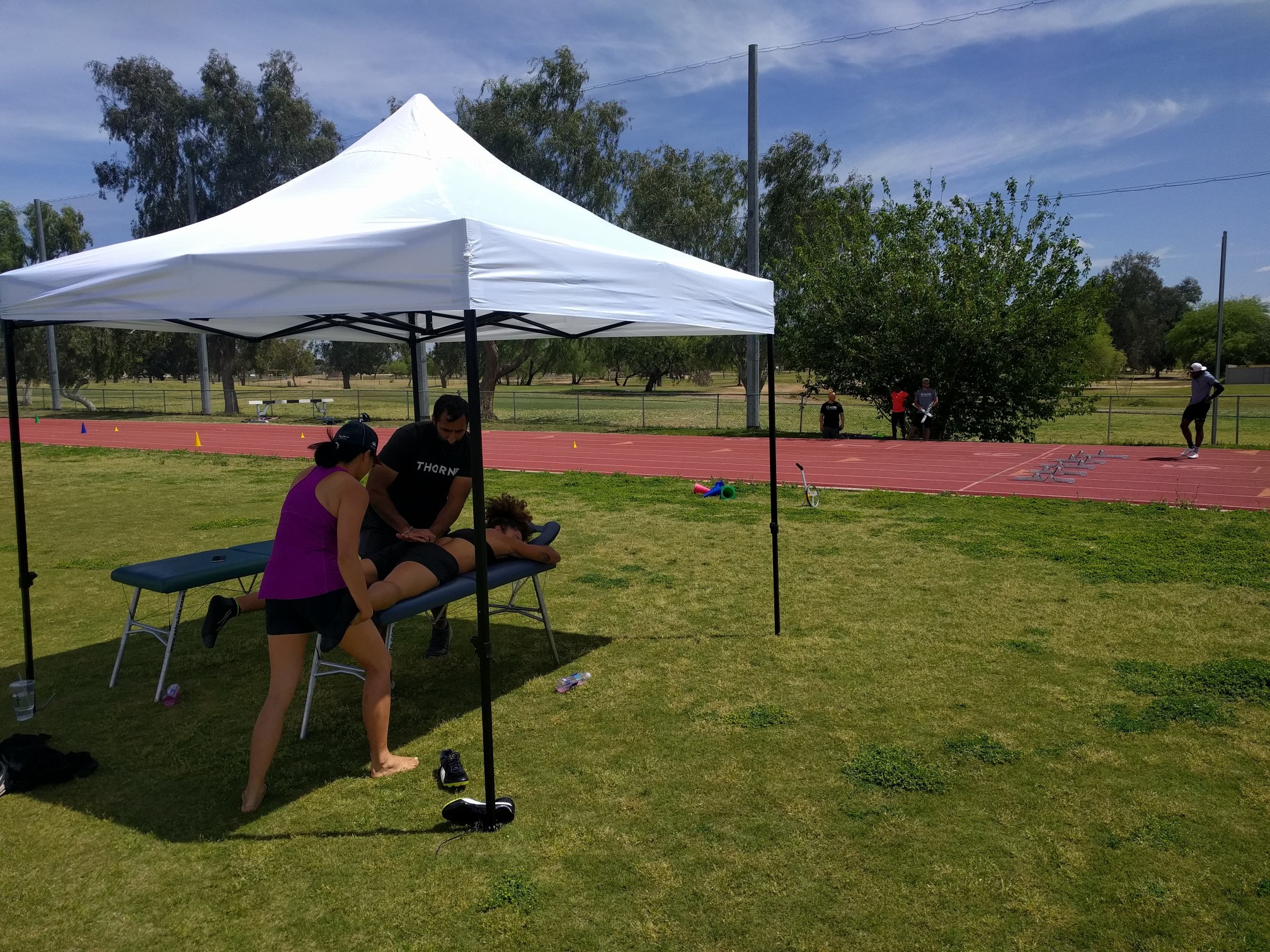In April this year, I was very lucky to be able to spend a week at Altis in Phoenix, Arizona. Altis is an organization that has an elite training environment for track and field athletes and is a global leader of education in sport performance. As a remedial massage therapist, I was very keen to learn from the Altis team what they did to ensure that their athletes are “ready to compete”, and I have to admit, I was very happy to find out that we shared a very similar mindset to approaching the health and performance of their athletes – that is, it’s important to look after people from a holistic perspective, and crucial to this is communication and collaboration and telling your ego to “get out of the way”.
The set-up at Altis is pretty interesting in that the coaches, therapists and athletes are all together for a number of hours a day. Each person has their defined role – the coach is there to help the athlete be the best in their sport and to work on their technique, the therapists are there to ensure that the athletes’ injuries are manageable and that they can do what they’re meant to do (more on this later), and the athlete well… to train, compete and win!
My partner and I shadowed the lead performance therapist (who is a chiropractor) and were also able to observe head coach Dan Pfaff in treating their athletes. We sat in a few presentations covering the topics of tendinopathy (particularly around the ankles) and what their thoughts were on getting MRIs to diagnose a particular problem.
Here’s a number of learnings that I took away from my visit:
- Each person’s body is designed and structured in a way that is based on the individual’s various idiosyncrasies (e.g. long torso, shorter legs, larger bone structure, historical injury, the way the individual moves on a day to day basis, etc). It therefore isn’t that effective treating the person according to standard formulas, you should treat the person based on their specific needs.
- Our job is not to fix people. We can only simply manage what presents. A “fix” more often than not is more complicated than “getting rid of the symptoms”. If the underlying cause was due to the way the body is structured, changing the structure of the body will take a lot of time, perhaps some pain, and the end result may mean that you can’t use your body the same way you used to. In the case of an athlete, “fixing” the issue would more likely than not mean that their times are significantly reduced and they no longer can compete at the standard that they currently are competing at.
- Because each person is individual, it pays to follow your intuition a bit when it comes to treating a person. Most of our best decisions are made quickly and without much thought or logic.
- Communication and collaboration are key. The more you can communicate with the person and those involved in their lives, the better. At Altis, the treatments are effective and the athletes excel because the performance therapists are very much involved in the entire training process. They get to observe how the athlete moves pre and post training, and during the actual training themselves. Every morning and every afternoon the performance therapists have a meeting with the coaches and discuss each athlete, where they are at and how on track are they at meeting their goals. As a remedial massage therapist in a clinic environment, I unfortunately don’t have the luxury being around my clients every day to understand what load is placed on their body (and quite frankly, that’s probably classified as stalking to the general public :P). So for me, there will always be a “gap” in terms of the knowledge I have of my client and that means that my treatments aren’t going to be as effective as they COULD be.
So there you have it! I have to admit, I wasn’t too sure exactly why I was feeling the internal nudge to go to Altis during my trip to the US but it was definitely worth it! I look forward to sharing some of the physical techniques I’ve learnt from my trip which involve deeper fascial release work as well as joint mobilization.

